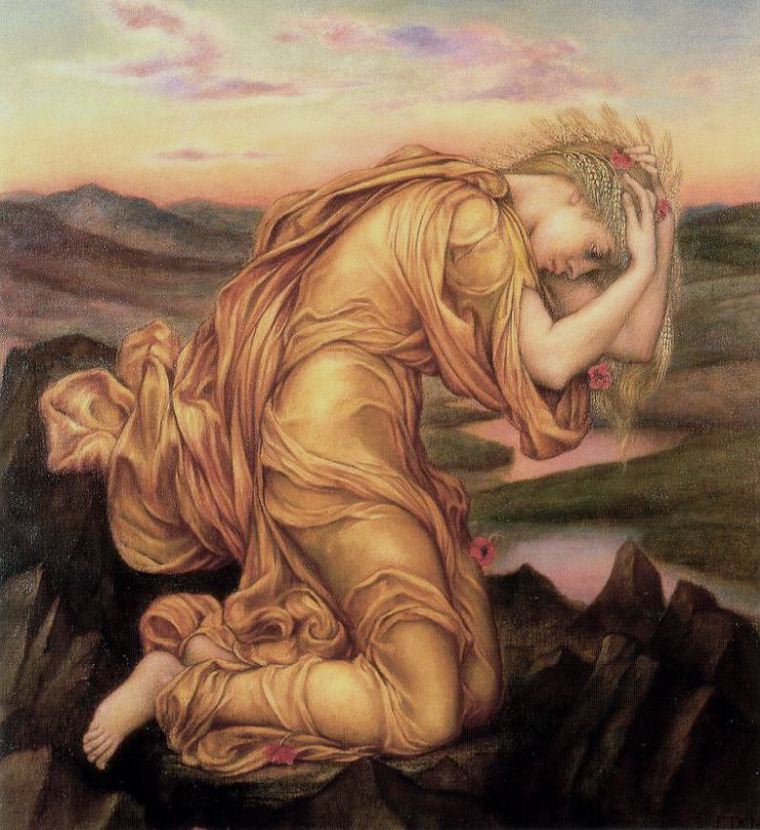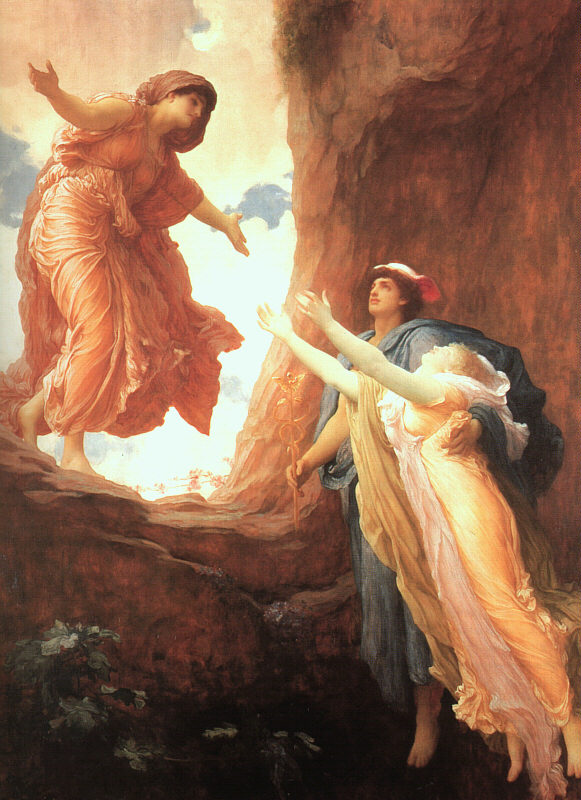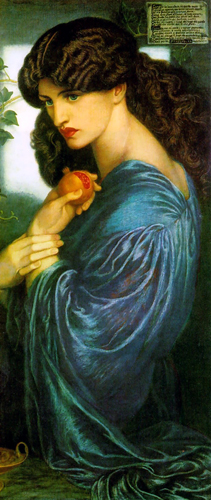
In De Morgan’s painting, we see Demeter as she mourns the loss of her daughter. Stricken with grief, she clasps her head–surrounded by shafts of wheat, denoting Demeter’s role as goddess of the harvest.
The tale of Demeter and Persephone personifies the depth of a mother’s love. It is a myth about the death and rebirth of vegetation, but it is somehow more than that. The change of seasons is symbolic of maternal devotion and the grief a mother feels when she can not help her child. It’s also about resurrection. With her daughter Persephone lost to the underworld, Demeter wandered aimlessly and literally stopped all growth, new life and vegetation in the world. With the assistance of the chthonic goddess Hecate, Persephone was returned. Since she had eaten pomegranate seeds while in the underworld, she was cursed to live part of each year with Hades and part with her mother.
Frederic, Lord Leighton depicted the reuniting of mother and daughter in The Return of Persephone:

Perhaps the most famous depiction of the Demeter/Persephone myth is Proserpine by Dante Gabriel Rossetti. Rossetti depicts Persephone (Proserpine as she is known in the Roman myth) just as she has taken the fateful bite of the pomegranate.

Don’t miss the PERSEPHONE web series from filmmaker Lisa Stock of In by the Eye Productions.
